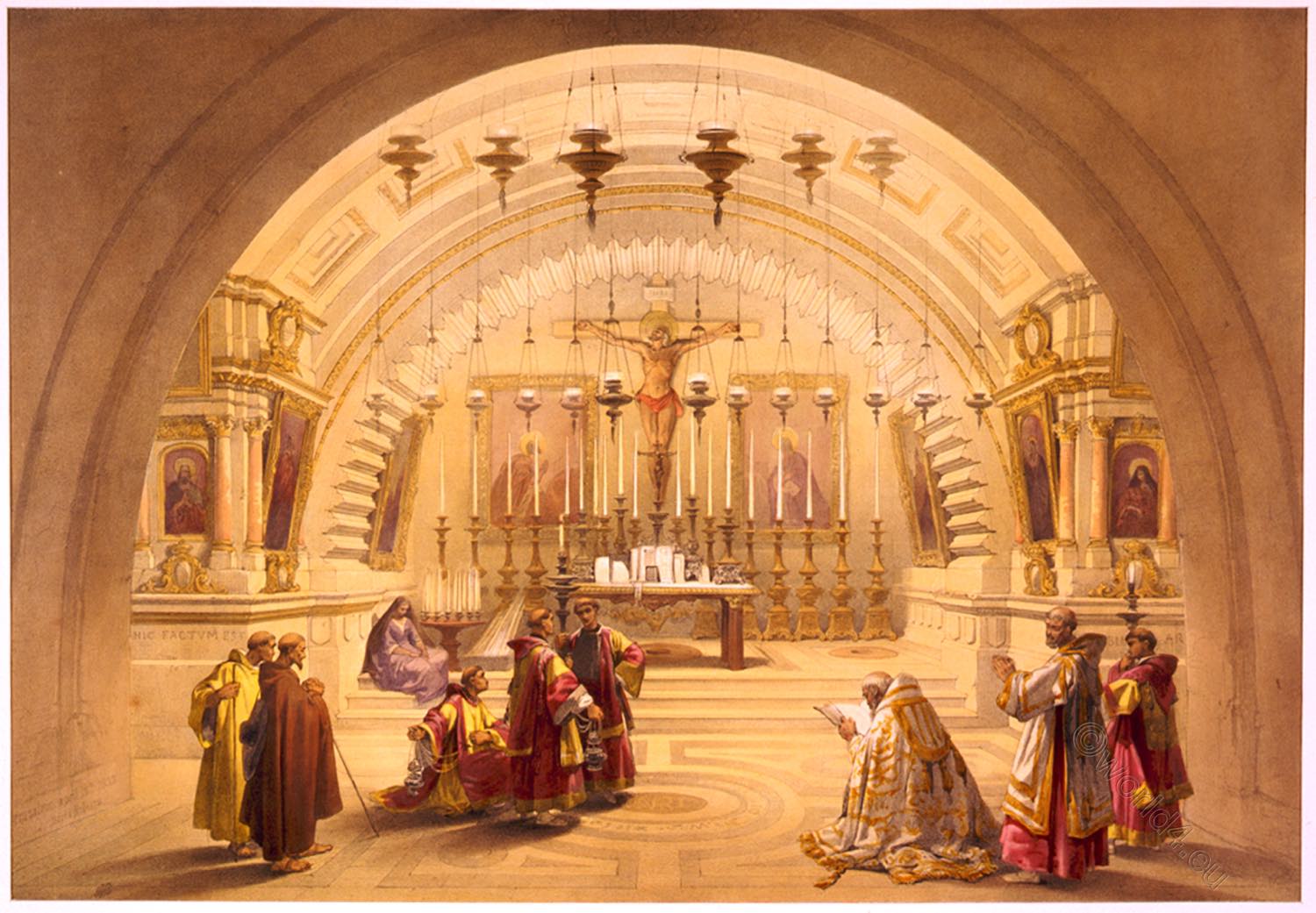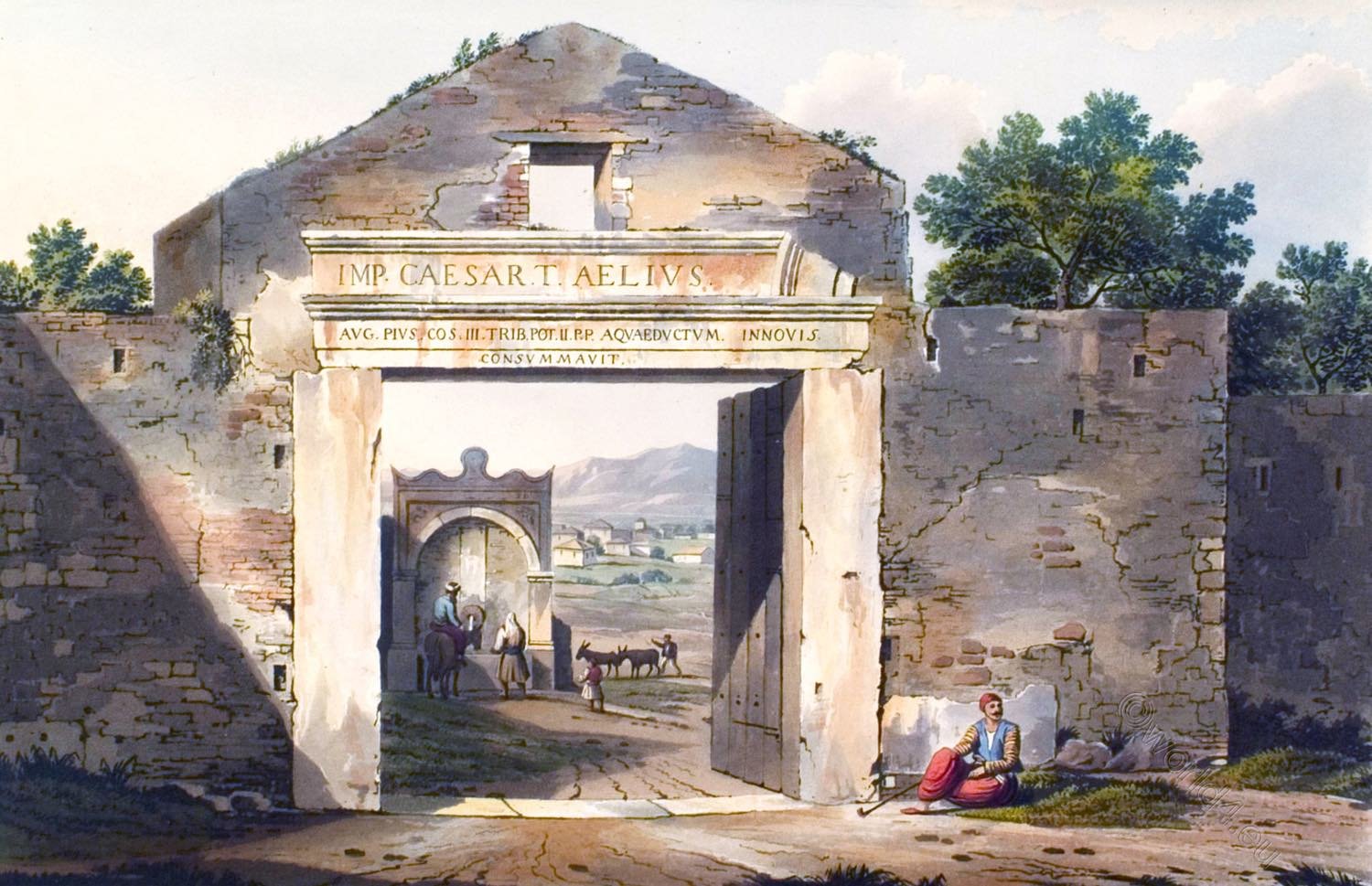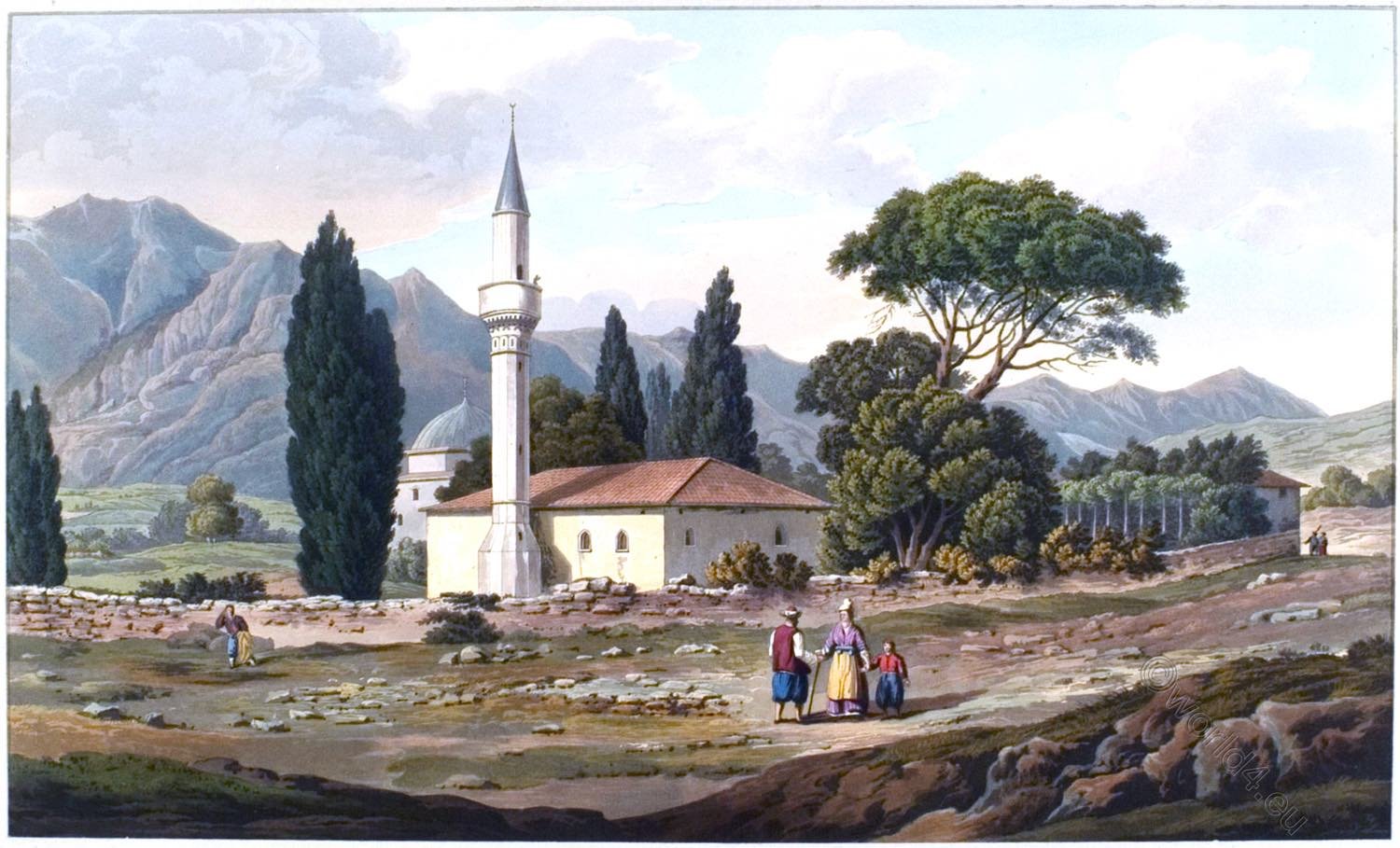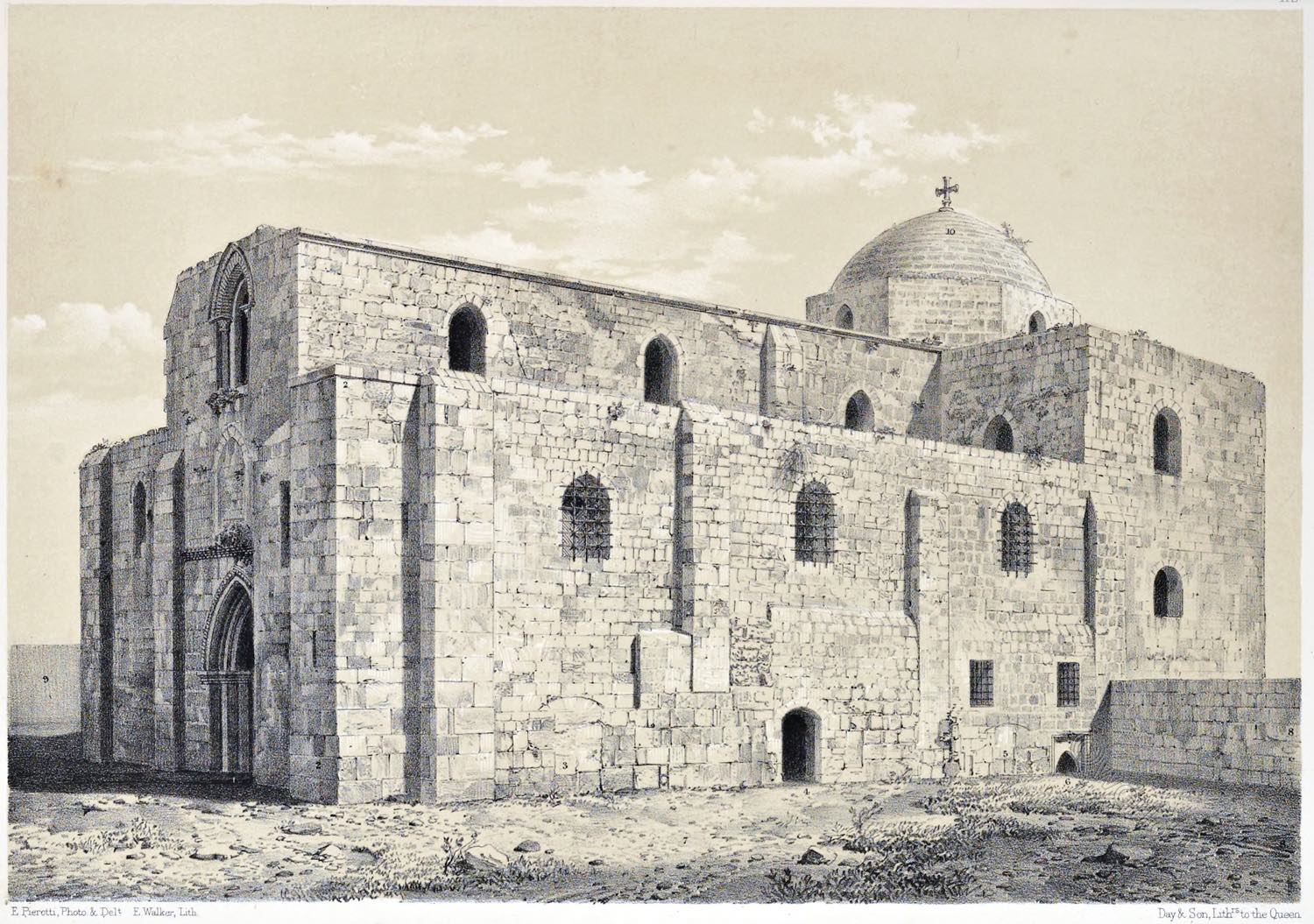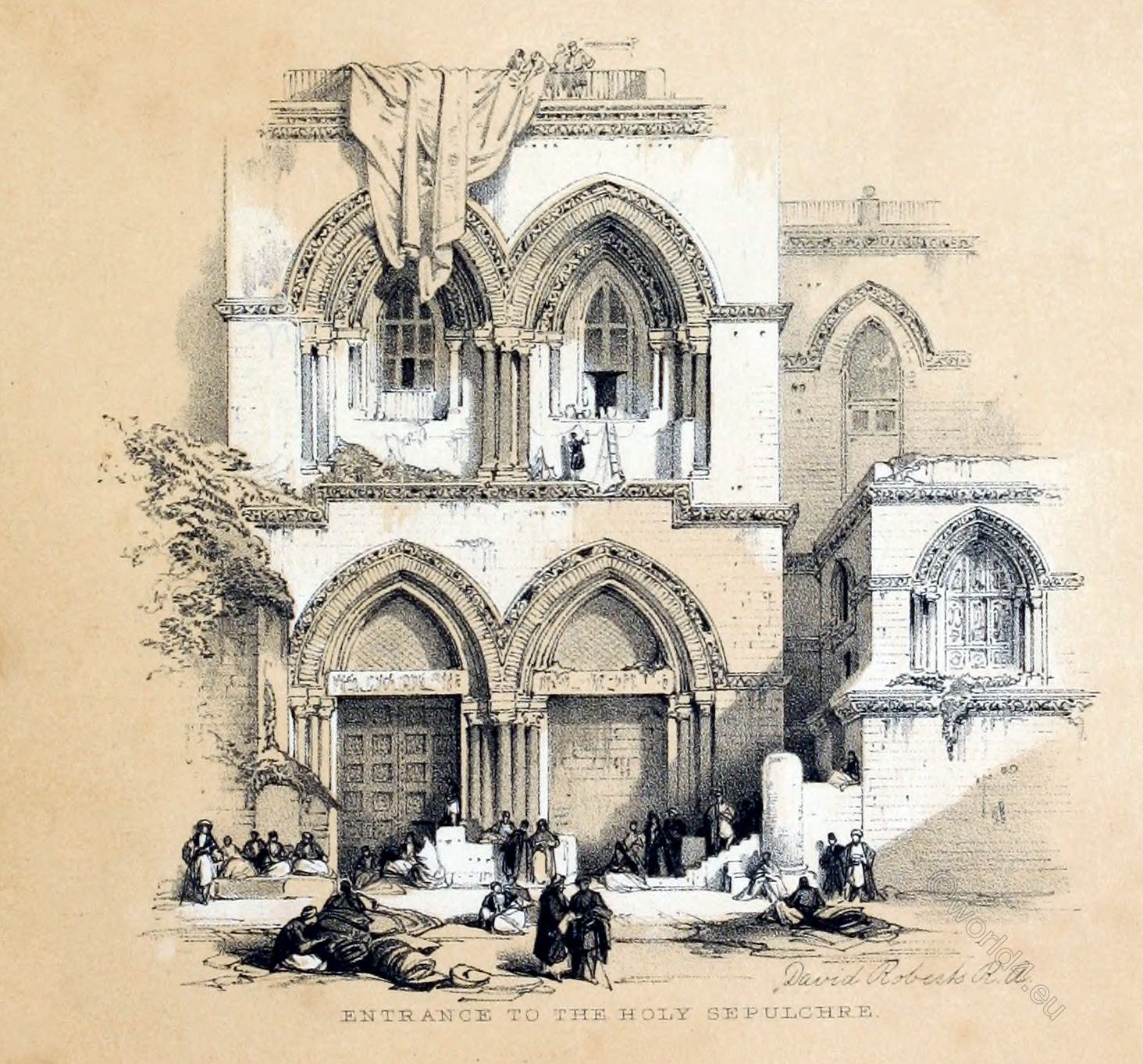
THE VIGNETTE ON THE TITLE-PAGE.
Entrance to the Church of the Holy Sepulchre
by David Roberts.
This Vignette represents the facade of the Church of the Holy Sepulchre, which is built over the spot where our Lord was presumed to have been buried. The streets leading to it are all traditionally distinguished by events connected with the crucifixion. From the Serai, the present residence of the governor, said to be on the site of Pontius Pilate’s palace, a street, named the Strada Dolorosa, or “Street of Sorrow,” represents, in part, the path trod by our Lord to Calvary; another street then intervenes, and brings the pilgrim in front of the Church. The ground there expands into a large, open space, filled at the chief festivals, with sellers of crucifixes, rosaries, carved shells, bracelets, and other matters of the same kind, which are carried away in remembrance of the sacred soil.
During Easter, the period of Mr. Roberts’s visit, this court was used as a bazaar, and was crowded with pilgrims and merchants. He thinks that the building must have been extremely beautiful previous to the fire of 1808, and regards it as still bearing a close resemblance to the rich architecture of St. Mark’s, at Venice.
The entrance is by an arched porch, with clusters of polished marble columns, principally of the beautiful verde antique, over which another tier of arches encloses the windows; the small building on the right is the Chapel of our Lady of Grief.
The capitals of the pillars of the porch, with its frieze and cornices, are exquisitely carved, partly in the Greek style, and partly in what is termed the Gothic, forming as it were the link between the two, and showing that the arts at the time must have still been in a high state of excellence.
The narrow frieze over the doorway represents the triumphant entry of our Saviour into Jerusalem. One of the doors has been walled up; the existing one, formed of massive materials, has three locks, the keys of which are kept by the Turkish governor, and is opened only on certain days at fixed hours, in the presence of the three dragomans of the Latin, Greek, and Armenian convents.
When the door is closed, the Greek Monks, who are now in possession of the Holy Sepulchre, receive their supplies by means of a basket let down from one of the windows. At the season of Easter, and during some of the great ceremonies of the holy week, the facade is hung with rich tapestry.
Source: The Holy Land, Syria, Idumea, Arabia, Egypt, & Nubia, by David Roberts (British, 1796-1864), George Croly, William Brockedon. London: Lithographed, printed and published by Day & Son, lithographers to the Queen. Cate Street, Lincoln’s Inn Fields, 1855.
Continuing
Discover more from World4 Costume Culture History
Subscribe to get the latest posts sent to your email.


